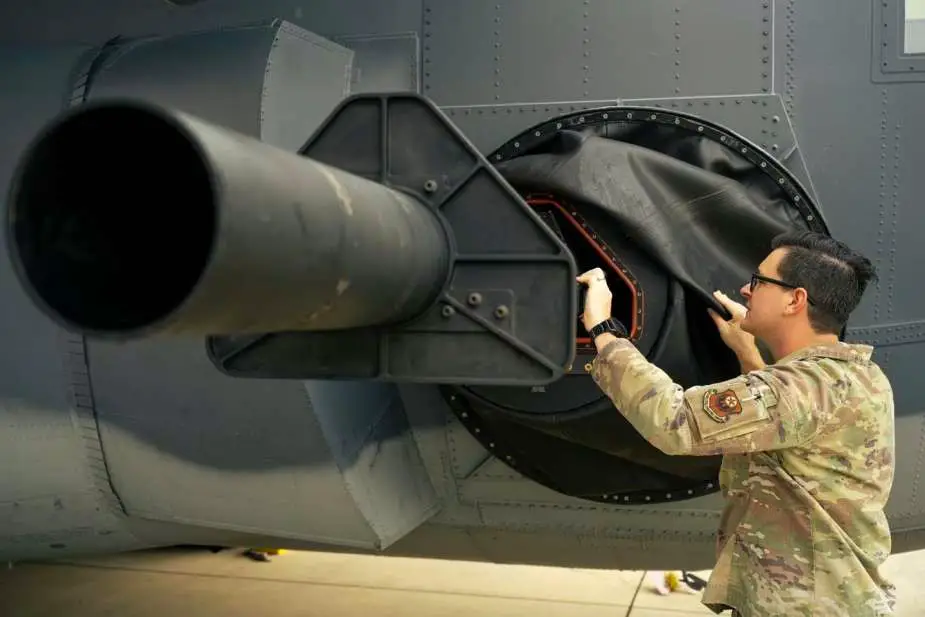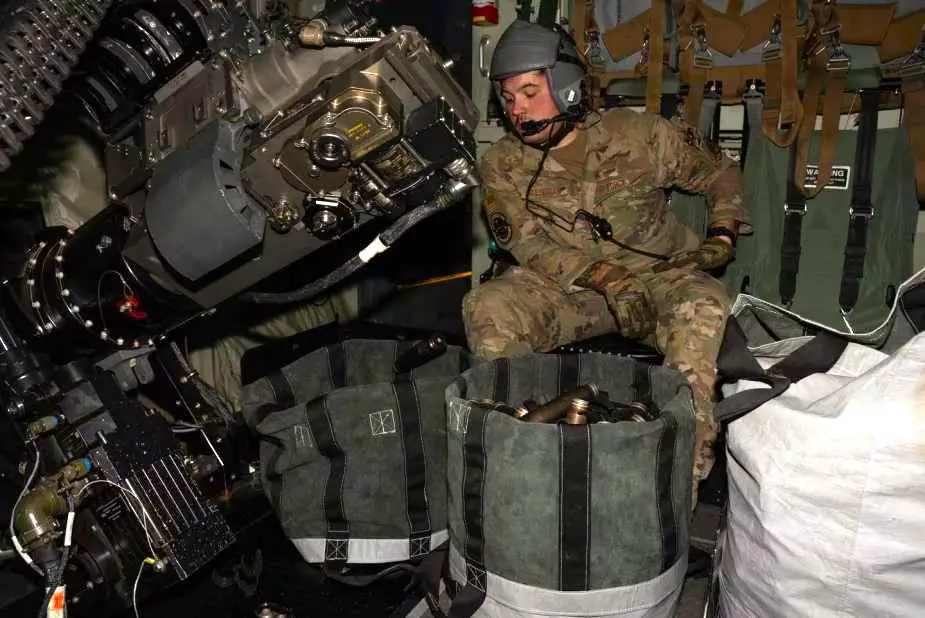Breaking news
US AFSOC considers swapping 105mm cannon for cruise missiles on AC-130J Ghostrider gunships.
The French Air and Space Force is considering equipping the C-130H Hercules of the 3/61 Poitou squadron with a fire support capability for special operations, which would essentially turn them into a kind of gunship. Meanwhile, the US Air Force is currently working on modifying the armament of its AC-130J Ghostrider gunships, as reported by Laurent Lagneau in Opex 360, echoing a story published in Defense News.
Follow Air Recognition on Google News at this link
 Staff Sgt. Andrew English inspects a 105mm cannon on an AC-130J Ghostrider at Hurlburt Field, Fla., on Oct. 31, 2023 (Picture source: Airman 1st Class Bailey Wyman/U.S Air Force)
Staff Sgt. Andrew English inspects a 105mm cannon on an AC-130J Ghostrider at Hurlburt Field, Fla., on Oct. 31, 2023 (Picture source: Airman 1st Class Bailey Wyman/U.S Air Force)
In November 2022, the Air Force Special Operations Command (AFSOC) announced that it had received the 31st and final AC-130J Ghostrider, although it was supposed to have at least 37 aircraft to replace its recently retired AC-130U Spooky aircraft. Derived from the MC-130J Commando II dedicated to special missions, the AC-430J Ghostrider boasts significant firepower with its two 105mm and 30mm twin cannons (that can fire up to 200 rounds per minute) and the ability to carry precision-guided munitions such as the AGM-176 Griffin, AGM-114 Hellfire, GBU-39 Small Diameter Bomb and GBU-69 Small Glide Munition, as well as the ability to carry AGM-176 Griffin and AGM-114 Hellfire missiles, as well as GBU-39 and GBU-69 Small Glide bombs. The AC-130J is the fourth and latest version of the gunship series sometimes nicknamed the “Angel of Death” for its withering amount of firepower. Each aircraft costs 165 million dollars.
However, while the Ghostrider is useful for counter-terrorism or counter-insurgency operations, its relevance is less clear for interventions in contested environments, such as those envisaged in the context of increasing tensions with China. Hence, the ongoing deliberations within AFSOC are expected to conclude by 2025.
According to Defense News, in 2026, the AC-130 Ghostrider could lose its 105mm cannon, which was not originally part of its requirements, simply because it would no longer be useful if it had to operate under the threat of long-range surface-to-air missiles and air-to-air missiles. To enable it to operate at a safe distance, the AC-130J could carry cruise missiles, either under its wings or packaged on pallets. Such a concept, known as Rapid Dragon, is being finalized with AGM-158 JASSM-ER (Joint air-to-surface standoff missile – Extended Range). The idea of replacing the 105mm cannon with a laser weapon has been abandoned because "placing a laser where the 105mm cannon is located would create so much turbulence that it would disrupt the laser beam," as explained by a source from Defense News.
Among other adaptations being considered for high-intensity conflict operations, AFSOC mentions the installation of an active electronically scanned array (AESA) radar, resistant to jamming, to better detect potential targets, map the ground, and conduct air-to-air searches. This would be accompanied by the integration of a new mission system to enhance real-time tactical information sharing.
However, no final decision has been made regarding the 105mm cannon. Its removal would not be straightforward due to its weight, as it would require adjusting the aircraft's new center of gravity, thus necessitating very costly structural modifications. Additionally, as noted by Laurent Lagneau, not all AC-130J aircraft may be subject to these modifications, as the need for fire support capabilities in more limited operations will still exist. Perhaps the 17 aircraft that have replaced their M102 cannons with a recent Gatling GAU-XX may not be affected by these changes.
 U.S. Air Force Staff Sgt. Alain Haldeman, a 17th Special Operations Squadron AC-130J Ghostrider aerial gunner, conducts live-fire training on Nov. 10, 2022 (Picture source: Airman 1st Class Alexis Sandoval/U.S. Air Force)
U.S. Air Force Staff Sgt. Alain Haldeman, a 17th Special Operations Squadron AC-130J Ghostrider aerial gunner, conducts live-fire training on Nov. 10, 2022 (Picture source: Airman 1st Class Alexis Sandoval/U.S. Air Force)


























